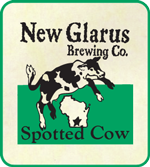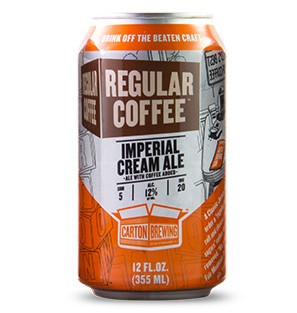What The Hell Is a Cream Ale?
What The Hell Is a Cream Ale?

As the days and blades of grass grow longer, so too grows our need to stay hydrated whilst pushing heavy machines across the yard. Yet having a beer called a Cream Ale doesn’t exactly sound like the best option to satisfy that thirst. Or does it?
Good thing you’ve tuned into the latest episode of our ongoing series (drum roll please…) “What the Hell Is a Cream Ale?”
The Basics:
With the huge influx of German immigrants in the late 19th century, the popularity of lager and pilsner styles exploded, especially throughout mid-America. Due to generally colder temps and local preference, Northeastern brewers were predominantly ale brewers, so they hatched a strategy to keep up.

Though a cream ale differs from the kölsch in one major way: the addition of rice and/or corn adjuncts to lighten the body. Historically, the dominant cream ales of the Northeast have been Narragansett from Rhode Island and Genesee from Rochester, NY, yet since prohibition they’re brewed nationwide with Rainier, Olympia, Old Style and even Natural Ice technically fitting the definition.
So, if you bought a cream ale in the hopes that it would be creamy or maybe even a dark malted beer, you’re probably not the first or last to do so. We get this disappointment, yet as we speak, those brewing cream ales are changing the style as we know it.
Cream Ales We Like and You Should Try:

Cali Creamin’ Vanilla Cream Ale, Mother Earth Brew Co.(Vista, CA) – This North San Diego County brewer has seized on the cream ale style and amped up the cream quotient. More like a cream soda, it’s got a subtle vanilla flavor at a mellow 5.2% octane which pairs perfectly with a trip to the beach.

Kiwanda Cream Ale, Pelican Brewing (Pacific City, OR) – Residing just adjacent to Cape Kiwanda, Pelican’s location on the Oregon coast is something to behold. So too is their 5.1% cream ale of the same name, which has single-handedly raked in 8 GABF medals, including four golds.
Our Take:
When one looks at the history and the general disregard many have paid to what has traditionally been an inexpensive, mass produced style, it’s now all the more impressive to see our artisanal brewers taking on the style without abandon. So, whether you prefer a light, cold and inexpensive ale that breaks from the lager mold or many of the great new options arriving daily on the craft scene, you’re sure to be surprised by this uniquely American, cold fermented ale.



















